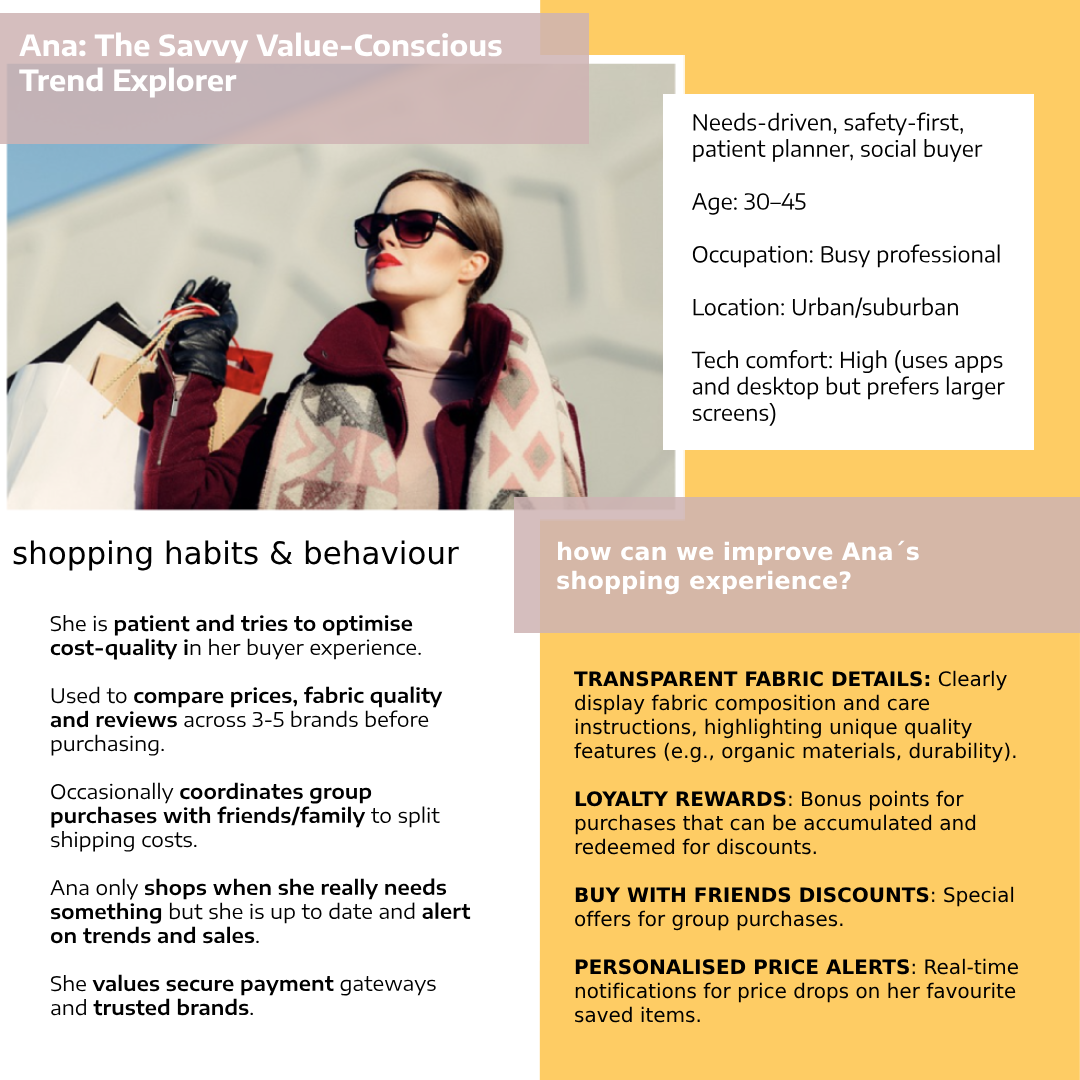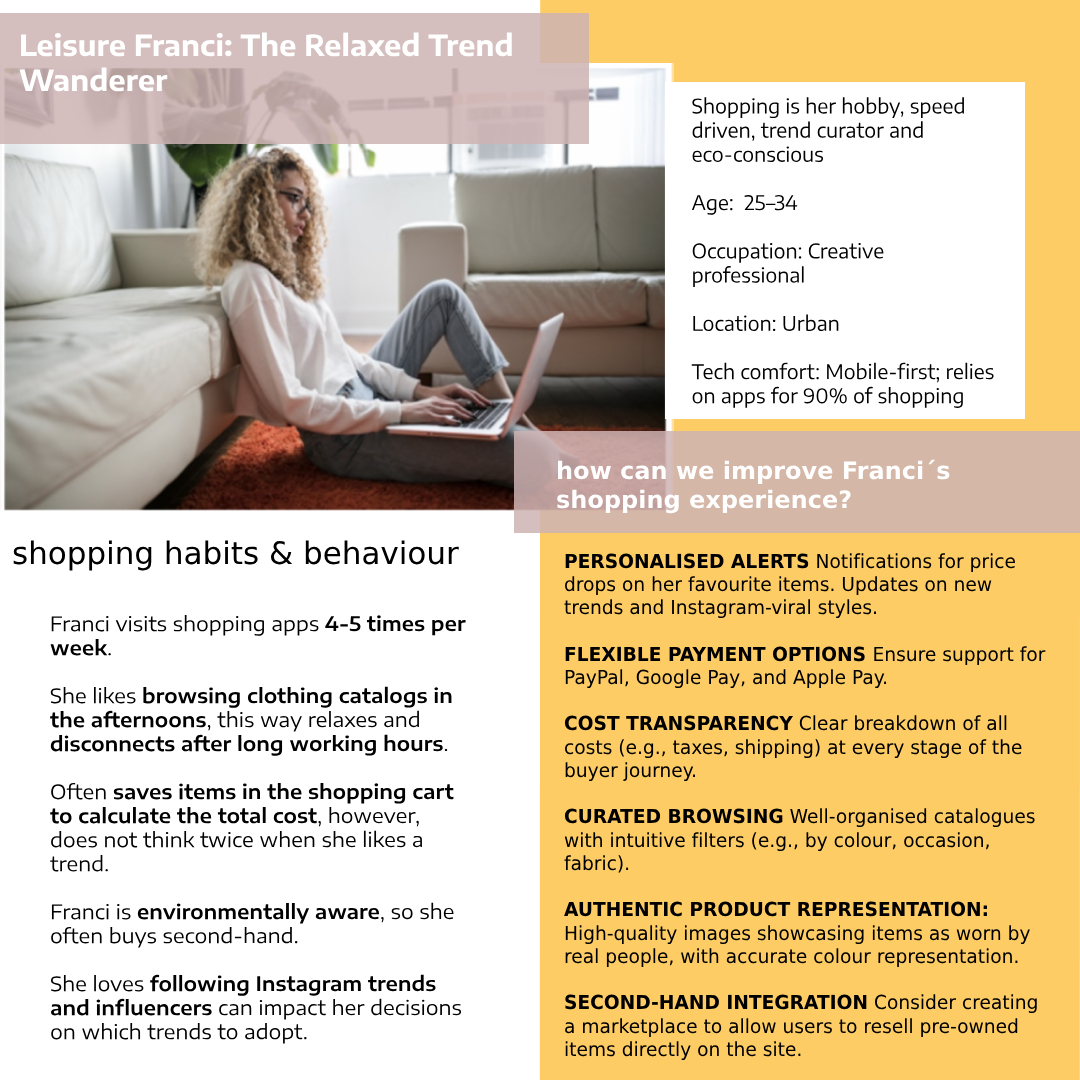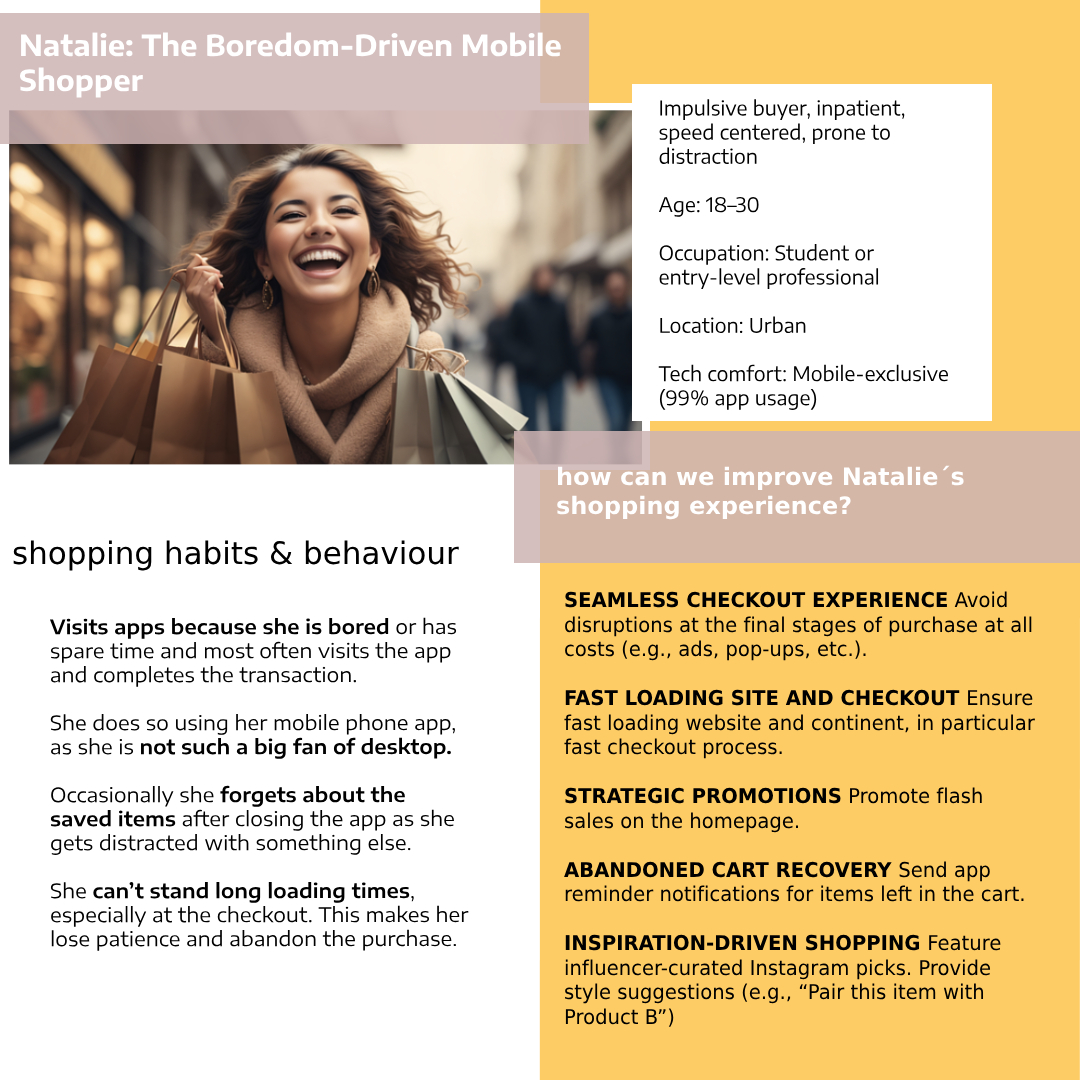User Research Project
Researching Online Shopping Behaviour
Online Shopping Store: MANGO
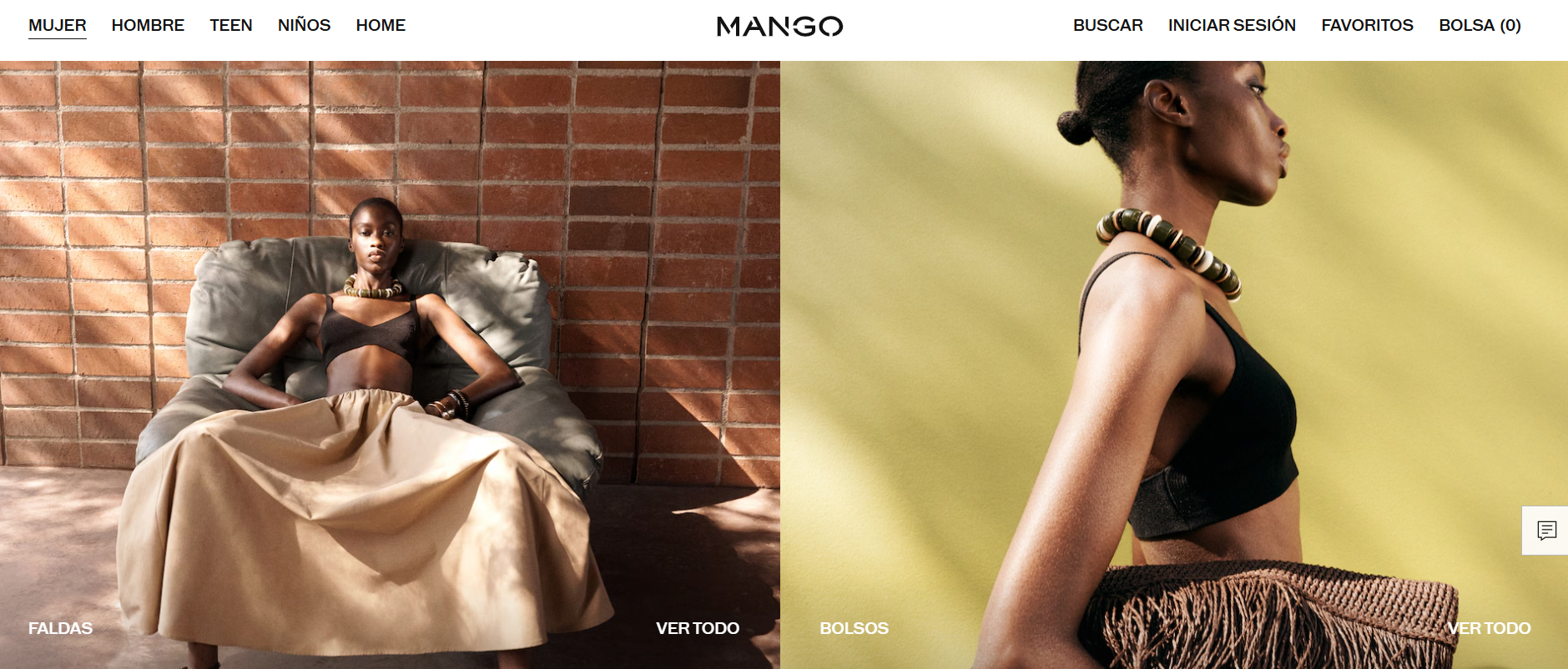
Project Overview
- My role: UX/UI designer
- Project duration: 15 days
- Methodology: Analysis, User Interviews
- Tools: FigJam, Zoom
Challenge
The MANGO online shopping store is facing a higher user drop-off rate, as a portion of users add items to the shopping cart and abandon it without finalising the purchase. The brand seeks to understand the causes behind the shopping cart drop-off.
Project Goal
Identify the reasons behind the higher user drop-off rate from the MANGO shopping cart and propose design solutions to reduce it.
BACKGROUND
MANGO is one of the biggest clothing brands in Spain. Well-known across the world, MANGO stands out as a good-quality and affordable brand.
Like many others, it is not immune to fast-fashion drawbacks; however, what its customers value most is its emphasis on natural materials, variety of styles, and lower cost.
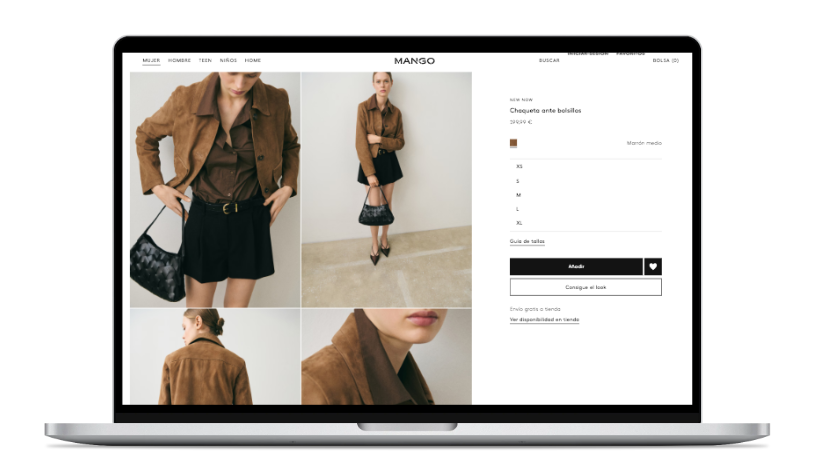
User Research
The research was focused on understanding MANGO users and their shopping behaviour, including their motivations and the main aspects they value in the shopping process. It was important to understand the user journey and explore the key pain points and frustrations users face during the shopping process, as well as identify the exact moment they decide to leave the online store without finalising the purchase
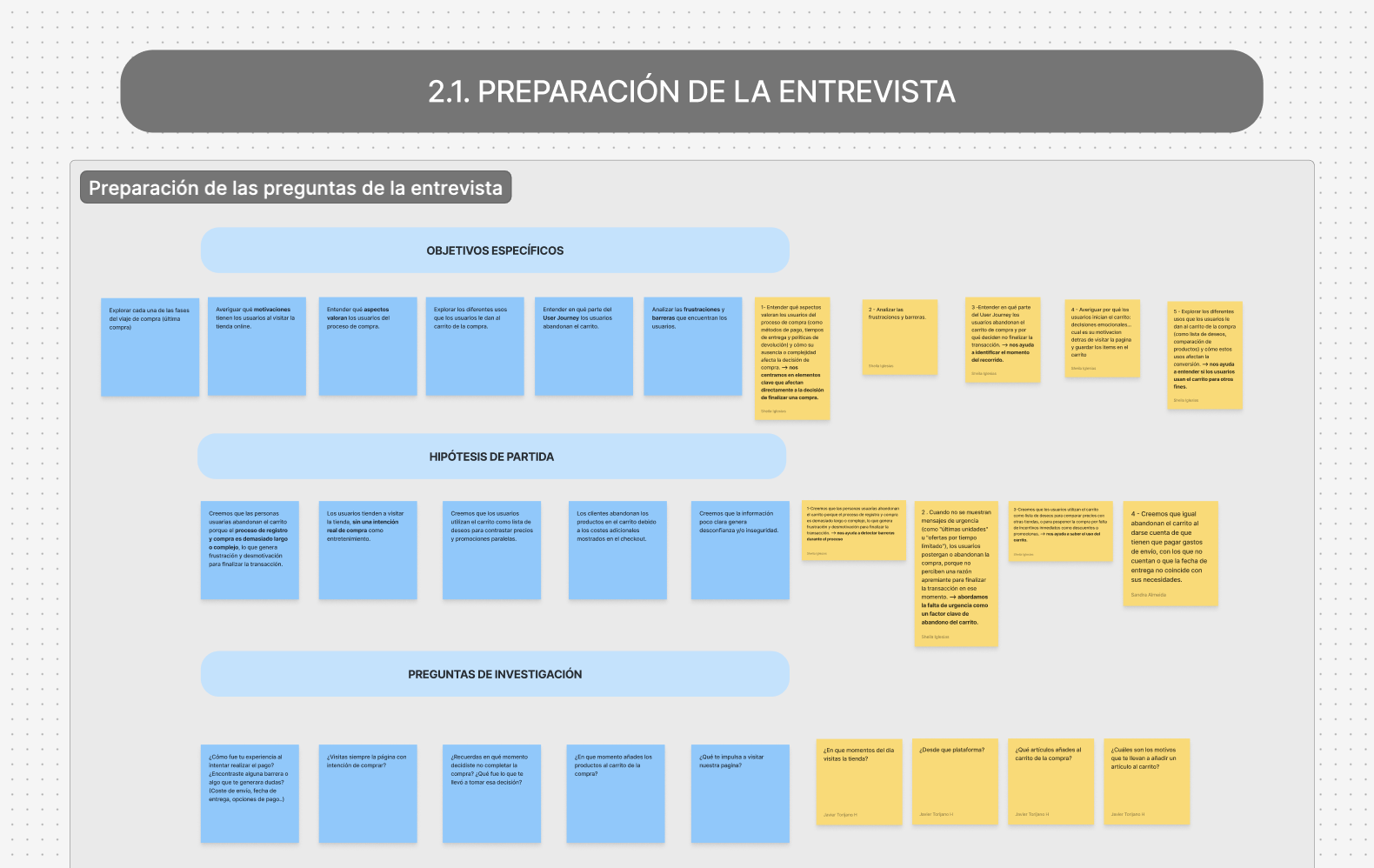
Objectives
📌 Learn about user experiences and expectations when shopping online
📌 Understand user motivations when adding items to the cart
📌 Identify common friction points in the shopping experience
📌 Understand why users abandon the shopping cart and decide not to complete the purchase.
User Interviews
Qualitative research in the form of interviews with a relevant sample of users was conducted.
Participant Selection Criteria: The primary condition for user selection was that participants had visited and navigated through MANGO’s online store at least once.
Participants
👥 6 female participants, aged 25–45
👥 All had previously interacted with MANGO’s online store
👥 Recruited through personal and professional networks
Methods
🔍 1‑on‑1 structured interviews via Zoom (30–45 minutes each)
🔍 Mapping in FigJam to analyze behaviors and outline insights
🔍 User persona synthesis to represent key user archetypes
Main User Personas
Based on the patterns and the insights from the research, I have developed three user personas. Each one of them is quite unique and has a very distinctive shopping behaviour. Understanding each one of them is essential in order to propose solutions that would reduce the shopping cart drop out. However, identifying patterns in their online shopping behaviour is equally important, and enabled me to propose specific design solutions.

“Sometimes I only use the shopping cart to compare the final price with the other brands.”
Ana

“I think I would really appreciate fotos of real people wearing the fashion items and clothing. It would give better picture of how an item would look in real life.”
Franci

“It happened to me that I have saved items in the shopping cart and then totally forgot about it.”
Natalie
Key Learnings & Insights
Interviews with users helped me understand that they desire their online shopping experience to mirror real-life interactions in a store. This also reflect on the way they use the shopping cart (not every visit to a store ends up with a purchase). I learned how much users value transparency and clear information. Transparency and clear information makes users feel safe when making online purchases.
Shopping Cart is Misused
Users treat the cart like a wishlist or bookmarking tool—not just a place for ready-to-buy items.
Immersive Online Shopping
Users crave an online shopping experience that closely mirrors real-life interactions.
Transparency is Highly Valued
Users value transparent product information, and customer support when buying items online.
Unclear product and shopping information
Solution: transparent information about the products and the shipping times.
Incorrect product availability details
Solution: highlighting that the product is out of stock and they can save it for later
Lack of shipping cost transparency
Solution: Include transparent information about the shipping costs
Design Solutions
Features Ensuring a Good Online Shopping Experience
🔍 THE SHOPPING CART IS SOMETIMES USED AS A WISHLIST
✅ Solution: Differentiate “Add to cart” CTA button from the “Wishlist”.
✅ Solution: Enable the “Save to Wishlist” option for both, registered and unregistered users.
This way, the users will be saving the items to the Wishlist, which will reduce the misuse of the shopping cart. Reduced misuse of the shopping cart will have a positive impact on the abandon rate.
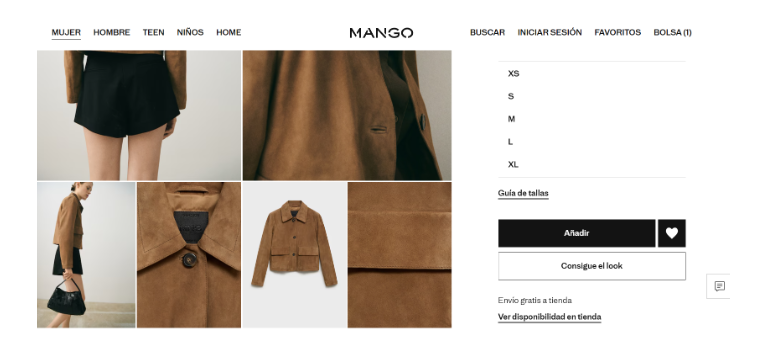
- CUSTOMER REVIEWS supporting different clothing items make the users feel safer when making a decision on making a purchase.
- USEFUL, STRAIGHTFORWARD PRODUCT DESCRIPTIONS to satisfy user needs and offer all the necessary information, and this way create more real-life kind of shopping experience.
- WELL ORGANISED PRODUCT CATALOGUE & FUNCTIONAL FILTERS streamline the browsing process, making it easy for the users to find what they need.
- DETAILED SIZE GUIDELINES AND SIMULATORS are very helpful in supporting the users when making decision on purchasing items online. These tools ensure a more interactive shopping experience, increase conversions, and reduce return rates.


- REALISTIC PHOTOS (accurate colour representation, diverse, relatable models) bring the online shopping experience more closer to reality by providing customers with a clearer and more accurate representation of products.
- LIVE CHAT SUPPORT for real-time assistance brings online shopping closer to real-life experience and increases trust.
- FABRIC CARE INSTRUCTIONS set the brand as knowledgable and caring about quality and how to preserve the items.
- NON MANDATORY ACCOUNT CREATION (ability to purchase or save items as favourites without registration).
- FAST-LOADING SITE with a quick, secure checkout process.
- IN-HOUSE SECOND-HAND MARKETPLACE to enable the users resell second hand clothing items they purchased from your brand. This way attract the users that are environmentally friendly and support circular economy.
Project Reflection
The project reinforced the importance of listening deeply to users to really understand the why behind their behaviors. What may look like indecision or drop-off can actually be a sign of strategic shopping.
Next Steps
👋 Collaborate with designers to incorporate the proposed design solutions and build high-fidelity prototypes
👋 Conduct usability testing to assess and validate the proposed solutions and user interactions.
👋 Benchmark & analyze business impact using the established conversion metrics
.
Related projects
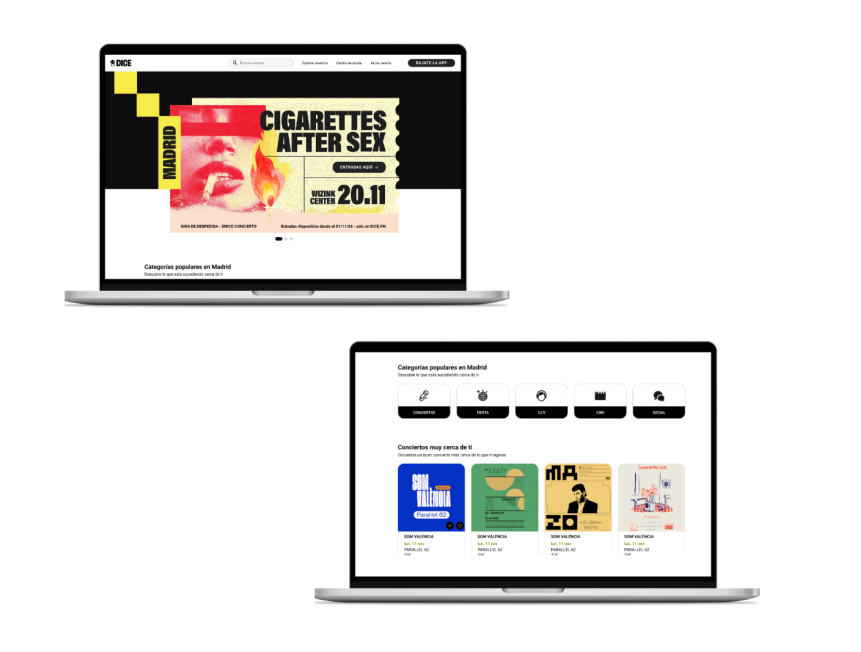
Improving the User Journey
